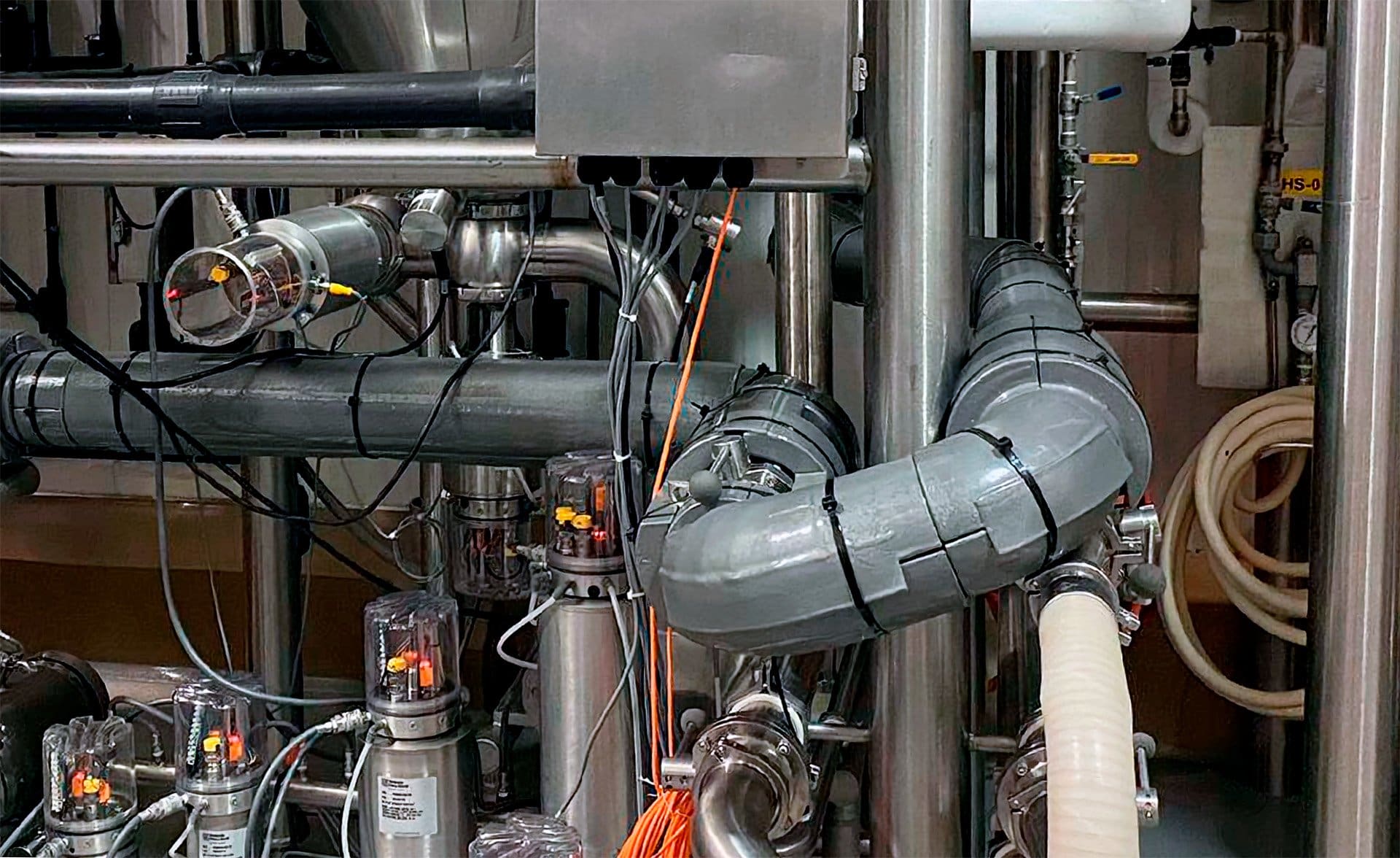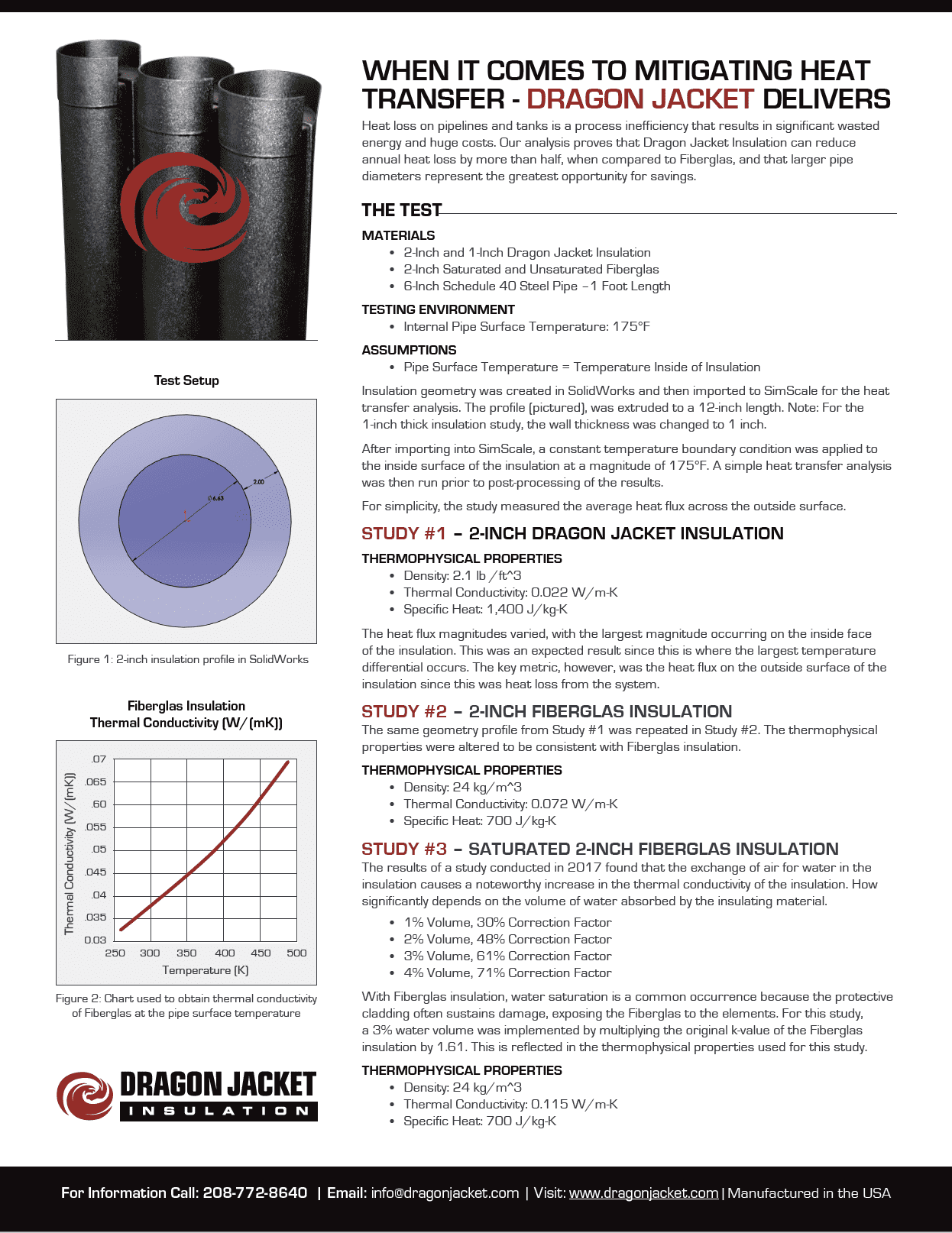How Well Does Your Insulation Work?
For many industries, the answer to this question can be the difference between successful operations and millions in lost product and profit. Modern industry depends on effective insulation for the integrity of their processes and the safety of their workers. One of the most critical functions of insulation is its ability to mitigate heat transfer. Insulation that does not protect against heat transfer can compromise product viability, drive up energy costs, and create dangerous operating conditions.
Download the Full Study
The Purpose of Insulation is to Keep Heat Where It Belongs
Many industrial processes including food production, mining and chemical production involve moving and storing high temperature ingredients and materials through pipes and tanks. Heat transfer occurs when heat moves from the inside of the pipe or tank to the outside world. Without an effective thermal insulation barrier, the necessary heat is lost and the product within the pipe and tank system becomes compromised. Unnecessary heat loss results in wasted product and expensive energy inefficiencies. It can also lead to dangerously hot surfaces, creating health risks for employees.
Thermal insulation seeks to limit this transfer of heat, and certain materials have been found to be especially effective in this task. The ability of a particular insulation to resist heat flow is expressed in its R-Value (short for resistance value). This number is a measure of heat flow resistance through a particular thickness of insulating material and is an important factor in determining which insulation is most appropriate for a given use. The higher the R-value, the more effective the insulation is. When more than one insulation layer is used, the R-values are simply added together.
(The inverse of R-value is U-value, which is a measure of heat lost through a particular thickness of insulating material. The lower the U-value, the more effective the insulation is.)
The best insulation options limit heat transfer and maintain the integrity of industrial products and processes.
Insulation and the Quest to Control Heat Transfer
From mud to cork to asbestos, people have used a wide range of materials for insulation. These days, for industrial applications, modern industry relies on standards including rockwool, fiberglass, and polyiso foam, among others, but when it comes to heat transfer, there is a clear winner.

Rockwool and Fiberglass
Rockwool is made from spun molten rock, slag and ceramic material and is commonly used in modern pipeline insulation applications. While it is dry and while the integrity of any waterproof coating has not been compromised, rockwool has a respectable R-value of 3 to 3.3 per inch as opposed to fiberglass, which has an R-value of about 2.2 to 2.7. Problems arise, however, when moisture enters into the equation because as anyone who has ever taken something out of the oven with a wet potholder can attest to, moisture can greatly increase thermal conductivity and, thus, heat transfer.
Both rock wool and fiberglass are highly absorbent materials, and if their moisture-repellant coatings become compromised under high-temperature operating conditions, it won’t be long before their protective benefits are lost and they become a facilitator of corrosion under insulation (CUI).
Meeting a Higher Standard
To consistently maintain high industrial operating temperatures, pipe and tank insulation needs to deliver consistent, reliable heat transfer protection. To do this, the insulation must be waterproof and allow for drainage when moisture is present. This is where Dragon Jacket products excel.
Dragon Jacket products are made of closed-cell polyisocyanurate foam encased within a durable, rigid, seamless polyurea outer barrier. With an outstanding R-value of 12.53 per two inches, Dragon Jacket products are 100% waterproof and highly resistant to petroleum-based chemicals, hydrocarbons, and other caustic substances. Because it is waterproof, over the long term, Dragon Jacket insulation delivers uncompromised heat transfer protection.
Say Goodbye to Heat Transfer with Dragon Jacket
Insulation heat loss can translate directly into lost revenue for industries. In a recent study comparing 1-inch and 2-inch thick Dragon Jacket insulation to fiberglass, Dragon Jacket products were found to deliver superior heat transfer protection. Dragon Jacket products are typically two inches in thickness, maximizing their heat-resistant properties. But even at a thickness of one inch, Dragon Jacket outperformed the other products dramatically.

The above simulation layout shows an inside surface temperature of 175˚ for all four insulation types.
As the table below demonstrates, heat loss also means lost revenue—at levels that can be alarming. These numbers bring into clear view the importance of using the best insulation available.






